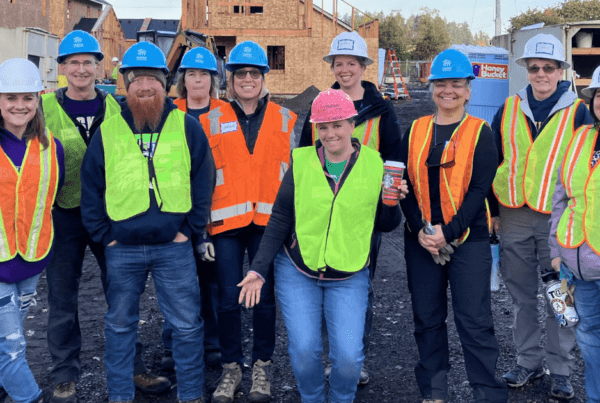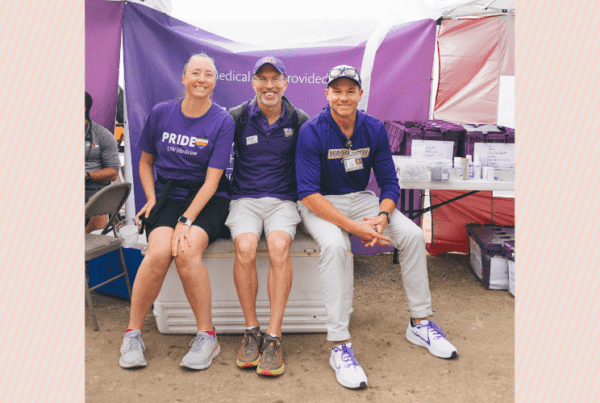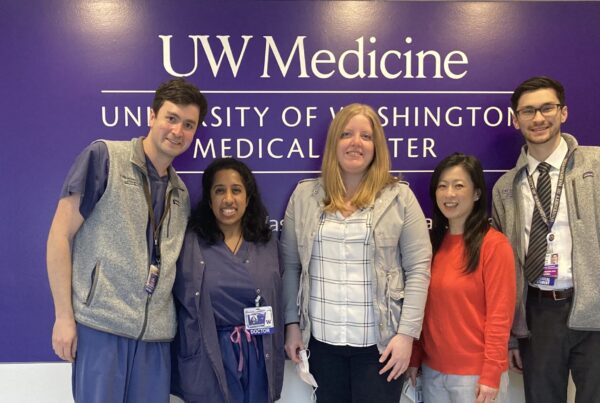Only 26% of the computing workforce is women, less than 10% of whom are women of color.
That’s why Cindy Yeh and Andria Ellis, graduate students in the UW School of Medicine Department of Genome Sciences, created Genome Hackers, a one-week camp for high school girls focused on teaching computer science using biological concepts.
Being a woman in STEM
Yeh works in the Dunham Lab studying the natural variation in yeast and how that applies to evolution, and Ellis works in the Trapnell Lab studying how cells in the body differentiate, reprogram and transition between cellular states. They both use coding as part of their scientific research.
Although both Yeh and Ellis were interested in science from a young age, neither had been exposed to coding until they were out of high school and already into their professional development.
They wanted young women interested in science, technology, engineering and math (STEM) fields to be able to experience coding and understand the interdisciplinary relationship between computer sciences and life sciences, and hopefully encourage more women to explore computer science and its applications.
“I want girls to know how coding and biology go together and how interdisciplinary STEM is. It can be multifaceted, and you can be interested in more than one thing,” says Yeh.
Genome Hackers
This year is Yeh and Ellis’s fourth year of running Genome Hackers, which is funded by the National Center for Women in Information Technologies.
In the past, the curriculum included equal time in the computer lab and wet lab, learning coding and working with DNA from organisms like worms, flies, thale cress, yeast and mice to turn biological concepts into experimental coding challenges. Culminating the week, students prepared a poster presentation for the Genome Sciences faculty, staff and students.
This year, to accommodate physical distancing measures during the pandemic, Yeh and Ellis rearranged their curriculum for online learning.
“We focused on virology and SARS-CoV-2. We knew girls would be interested and our department has been a big resource during the pandemic, so we thought it would be cool for students to speak with scientists working with this new firsthand data,” says Yeh.
They also slowed down the pace of the camp, expanding it from five half-days to seven in hopes of giving students more time to focus on learning the fundamentals of Python (coding language) so that they could successfully write two functions that turn DNA into RNA and RNA into protein.
Even though the camp was online, Yeh and Ellis still wanted the students to receive individualized attention, so they had five graduate student volunteers from their program assist in small breakout rooms
“I learned so much this year. Every time you teach in a different way you learn something new,” says Ellis. “And teaching online was whole different universe.”
To meet the needs of their virtual constraints, Yeh and Ellis ditched the quintessential research poster and had each camper present a website that they built as their end-of-camp finale.
“We got great feedback from students. They felt like they learned a lot,” says Yeh.
Inspiring young women in STEM fields
Yeh and Ellis started this program during their first year of graduate school, before they had even started their laboratory classes. As much as they are passionate about science and learning, they are also passionate about supporting women in their field.
“From talking with the girls about women in STEM, we learned they are aware of gender imbalances in different fields,” says Yeh. “We wanted them to see other women scientists and say, ‘This is something I can do.’”
“Showing high school students what graduate school looks like and what science could look like for them is valuable,” says Ellis. “There is no one-size-fits-all for science.”


